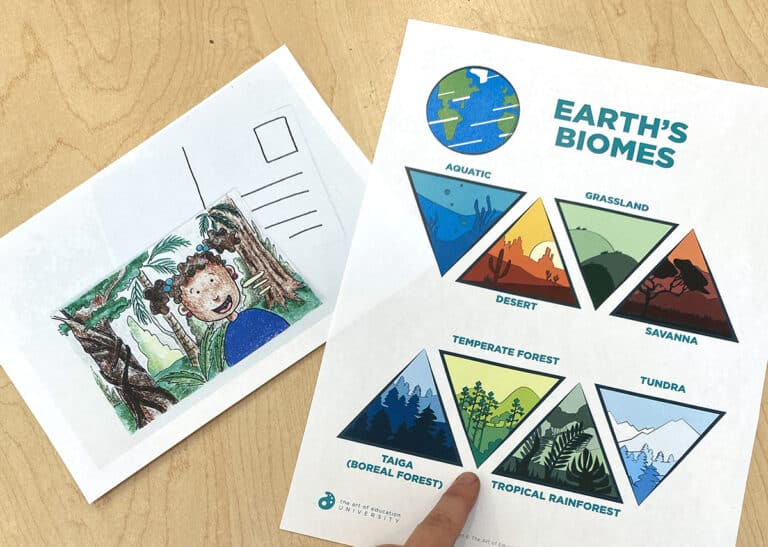As you look to expand your offerings and grow your program, think about how a class in creativity could benefit your school. Most art programs tend to be structured by level (Art 1, 2) or by medium (Photography 1), but the focus remains on making art. While creativity can be honed and developed in the art room, it isn’t always the top priority when balancing technical skills, making, art history, vocabulary, etc.

Linked In published their annual report of necessary skills in 2020, and creativity topped the charts, just as it did in 2019. Art programs should always be looking for ways to stay relevant, and this is a great opportunity. Having a course in creativity can be a positive addition to your program by engaging more students in the arts and developing a skill set deemed critical in today’s everchanging world.
What is creativity?
For the purposes of this discussion, creativity will be used to describe the ability to think of multiple solutions, develop original ideas, and make connections between two seemingly disparate things.
How is a creativity course different than an art course?
Typical art classes can be bogged down with the pressures to create and make art. The product becomes a big priority. And there is nothing wrong with the motivation of wanting students to be happy and successful. But a course that focuses on creativity can better put process over product and work to develop a mindset and a skill set as the end goal.

Because the course shifts away from art, students may feel less concerned about their artistic abilities. You won’t hear the typical responses like, “Oh, I can’t even draw a straight line with a ruler.” As you know, art can make students feel self-conscious, and that prevents students from signing up for art courses. Without that baggage, a course in creativity might engage more students in your art program who wouldn’t have signed up otherwise. Additionally, some students and families are motivated by courses that directly connect to their future goals. As a result, many students don’t take art courses because they don’t see a connection to their desired career path. A course in creativity can appeal to a different population of students.
What would the curriculum be?
Going back to the working definition from above, the class could be broken up into multiple units based on what you want students to know and be able to do. It could also be based on how you want students to think. Develop activities and exercises to help teach students how to do the following:
- Think of Multiple Solutions: Pushing a person beyond one idea can be challenging, especially if they like that idea. Develop activities that force students to come up with multiple solutions to the same problem. Start with something easy. Ask, “How many types of fruit can you come up within thirty seconds?” A time limit can help quiet internal judgments as students try to churn out ideas. As the course progresses, have students work toward more complex problem solving and solutions with more or fewer constraints.
- Develop original ideas: The ability to look beyond the obvious and develop unique ideas can mean the difference between good and great. When presenting students with a problem, have them start by responding with the most obvious or cliché ideas. Then, have them develop ideas beyond those typical responses. You could also challenge students to come up with a solution unique to anyone else in the class.
- Make Connections: Some of the most groundbreaking ideas were developed by connecting two things no one thought to connect. Use divergent questions to help students look for connections. For example you might ask, “How is making macaroni and cheese similar to throwing on the wheel?“
In order for students to be successful, they will also need to know certain approaches, like Design Thinking and Mindmapping, that will aid them in their creative processing. Further areas of study could also include how find inspiration, how to work through a creative block, and what are the right conditions to be creative.

Additionally, developing activities and utilizing resources that vary in theme and subject matter can help show students that creative thinking can be applied universally—not only in the art room. Presenting students with problems to solve from other content areas can create interdisciplinary connections and opportunities.
How could the work be assessed?
Assessing creativity can be challenging, especially when there isn’t a specific product to evaluate. Similar to an art project, however, focus on what you want the students to demonstrate from their learning. If the idea was to come up with multiple solutions, grade them on their ability to successfully identify a specific number of right answers. Rubrics, that allow reflection can be used to assess the quality and originality of ideas.
Learn more with the PRO Learning Pack: Generating Ideas for Art
In order to thrive and survive as an arts program, you need to continuously look at how your courses relate to the world around your students. Developing a course focused on creativity is not only valuable but also timely. Employers consistently list creativity as a top skill desirable in employees, and you can tap into this momentum for the benefit of your students and art program. Students and families, particularly those who view themselves as inartistic, might be motivated by this new course as a way to be better prepared for the workforce. Take advantage of this opportunity for the betterment of your students and the future of your art program.
What would help art teachers feel more prepared to teach a course in creativity?
Would your school support a class in creativity?
Magazine articles and podcasts are opinions of professional education contributors and do not necessarily represent the position of the Art of Education University (AOEU) or its academic offerings. Contributors use terms in the way they are most often talked about in the scope of their educational experiences.





